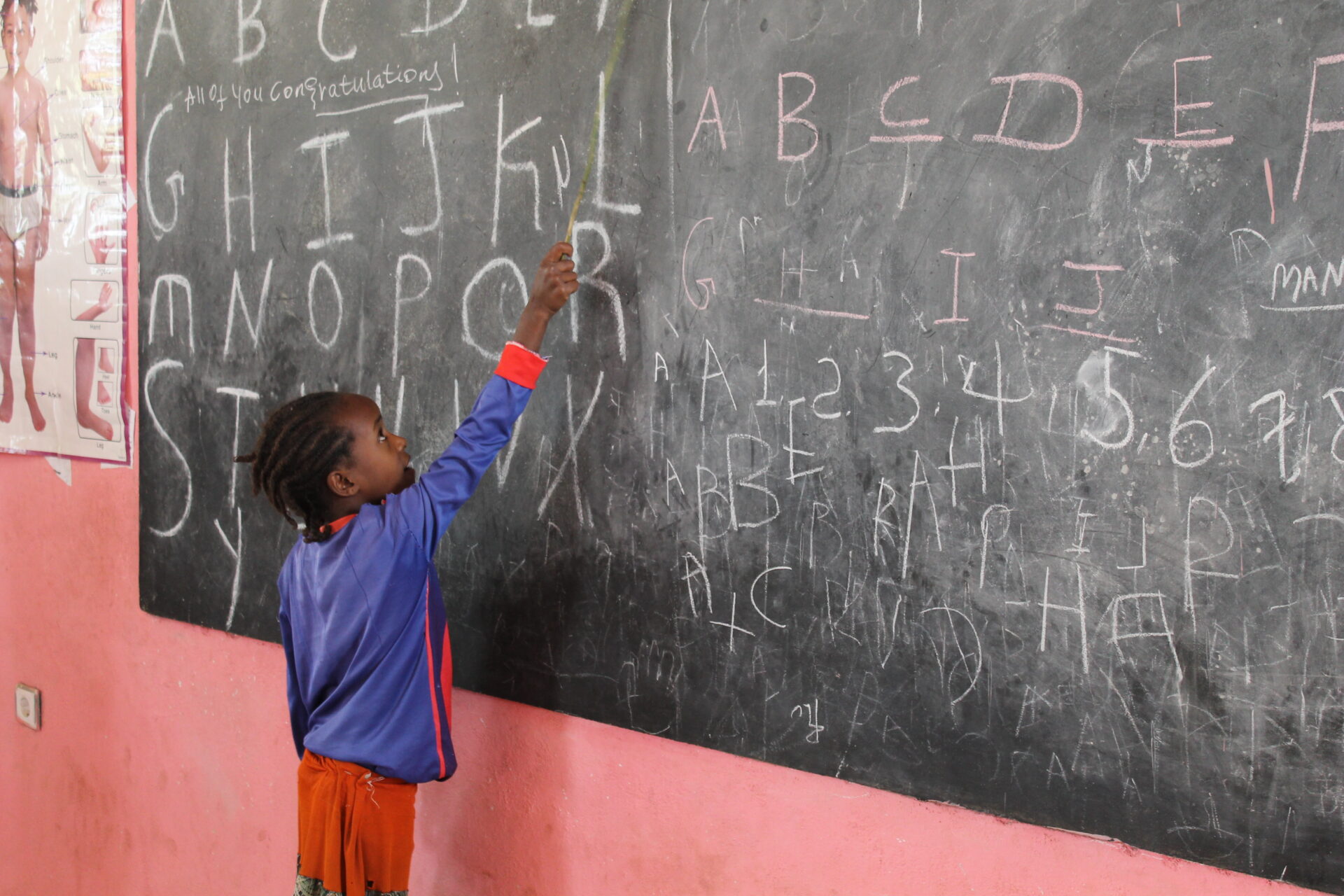Learning Without Limits: Improving Access to Quality Education
It’s a warm, sunny afternoon in Nairobi, Kenya as I pull up to Cheleta Primary School on the back of a motorbike. I’m greeted by a brightly painted cement gate that has the school’s vision written in bold black letters: A school without learning limits. As I climb off the bike and walk through the gate, enthusiastic voices fill the air – children repeating their lessons, eager to succeed. Inside, the school principal Mary Kimani Wahu gives me a warm hug and welcomes me into her office. Her passion for the students at Cheleta Primary is palpable.
Cheleta’s vision – a school without learning limits – may seem like common sense. But for many children across the globe, the barriers to learning are enormous.

What do learning limits look like?
Whether it’s because of conflict, gender-based discrimination, steep school fees, a lack of hygiene and sanitation infrastructure, or a variety of other reasons, there are currently 263 million children and youth who cannot go to school. In general, girls are more likely to be left behind when it comes to accessing education.
How do you work towards a school without learning limits?
Reflecting on the progress she’s seen since her time at school, when she was the only girl among her 45 peers, Mary notes that the education system in Kenya has made learning much more accessible to girls in recent years. Schools have adopted strict policies to reduce gender-based discrimination. Mentors and counsellors are on hand to help students develop confidence and assertiveness, regardless of their gender. Community awareness campaigns have helped normalize menstruation, and the government provides sanitary towels to girls in both primary and secondary schools so girls are no longer ostracized or forced to miss school because of their periods.
Mary also speaks passionately about the school feeding program at Cheleta: “Because the children are coming from the slums, in a special way the school is a rescue centre. The child did not have a meal at home, but they will come to school and take porridge and lunch.” Good nutrition plays a key role in ensuring that children have healthy bodies and curious brains so they can go to school and learn there. The right nutrients also help adolescent girls fight anaemia, allowing them to stay healthy enough to attend class and focused enough to learn. Schools provide an excellent entry point for nutrition interventions that break down barriers to learning and set children up for success throughout their lives.
“With a pledge of $260 million to GPE over three years – that’s less than $1 for every child who is currently missing out on an education – Canada can play a key role in helping GPE achieve inclusive and equitable quality education for all by 2030.”
Applying Cheleta’s vision to the world
A child’s learning should never be limited by where they live, their family’s resources, or their gender.
As the principal at Cheleta Primary School, Mary works hard to make sure this is the case for her students, and the world is coming together in pursuit of the same goal.
With its Feminist International Assistance Policy, Canada is helping to shape the global conversation about gender and inclusivity. This policy recognizes that educating girls makes it easier for people to break the cycle of poverty through fewer child marriages, increased wages for women, and increased GDP. Although there are still many factors limiting girls’ learning across the globe, Canada’s international assistance clearly expresses a desire to break down these barriers.
One of the most important ways Canada can do this is by supporting the Global Partnership for Education (GPE) – a multi-stakeholder partnership and funding platform that aims to strengthen education systems in developing countries. GPE leverages a range of expertise and insights to build sustainable, inclusive, and equitable quality education for all. The partnership brings together national governments, international organizations, civil society, teacher organizations, the private sector and foundations to raise funds and shape policies that will break down barriers to learning.
Girls’ education and gender equality is one of GPE’s key focus areas, along with children with disabilities; countries affected by fragility and conflict; development effectiveness; early childhood care and education; knowledge and good practice exchange; out-of-school children; and teaching and learning. By addressing these key barriers to education, GPE is helping to make sure that schools across the globe can realize Cheleta’s vision of becoming a school without learning limits.
With a pledge of $260 million to GPE over three years (2018-2020) – that’s less than $1 for every child who is currently missing out on an education – Canada can play a key role in helping GPE achieve Sustainable Development Global 4, inclusive and equitable quality education for all by 2030.
If we all come together in pursuit of this goal, I believe we can realize Cheleta’s vision on a global scale. One day, I hope we can proudly say we live in a world without learning limits.